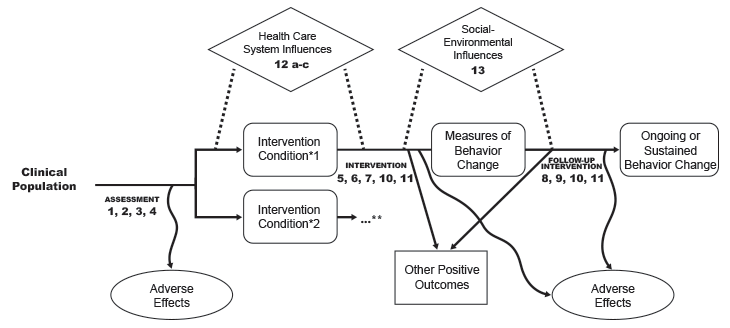Figure 2. Can Interventions in the Clinical Setting Influence People to Change Their Behavior?
Analytic Framework

Figure 2 shows a diagram explaining how one organizes the literature search and evaluation to answer the overall question "Can Interventions in the Clinical Setting Influence People to Change Their Behavior?" Such a diagram is called an analytic framework.
The figure "reads" from left to right and connects a series of boxes (containing population groups or outcomes of interest) using solid arrows (indicating actions that connect adjacent boxes) or dotted lines (indicating associations between adjacent boxes). Below the arrows are numbers, related to the key questions listed by number in the text. The location of the numbers on the diagrams indicates which key question(s) are to be answered to understand each action or association between population groups and outcomes.
This diagram is like Figure 1, in that boxes indicating a population group (intervention condition 1) and outcomes are connected on a single line by arrows, which also lead to ovals (for adverse effects) and a box for other outcomes below the line; however, this diagram is more complicated in that the entire line with all associated boxes and ovals could be repeated for a separate intervention condition. An intervention condition is defined on the diagram as a distinct patient subgroup identified through the assessment process that receives a particular intervention as part of their clinical encounter.
Reading across the figure on the main single line, first there is a body of text not in a box entitled "Clinical Population" that is connected to three other boxes by arrows. The next box is labeled "Intervention Condition 1," which is followed by boxes labeled "Measures of Behavior Change" and "Ongoing or Sustained Behavior Change," all on the same line. Below this line are two ovals labeled "Adverse Effects" and another box labeled "Other Positive Outcomes." Immediately beneath the box "Intervention Condition 1" is a similar box "Intervention Condition 2" marked to indicate that another intervention condition arising from the clinical population would undergo the same review process and answer the same key questions in parallel.
The first arrow in this diagram is labeled "Assessment" and indicates that key questions 1, 2, and 3 are associated with this action. This arrow indicates that the "Clinical Population" is assessed (per key questions 1-3) to identify one or more "Intervention Condition." An arrow leads from this assessment arrow below to potential "Adverse Effects" (key question 4). "Intervention Condition 1" is connected by an arrow labeled "Intervention" and indicates that key questions 5, 6, and 7 are associated with this action.
The intervention arrow is connected by a solid arrow to the "Other Positive Outcomes" box below (key question 10) and by a curvy arrow to the adverse effects oval (key question 11). Staying on the same line, the "Intervention" arrow leads to the next box "Measures of Behavior Change." This box is connected by an arrow labeled "Follow-up Intervention" that is associated with key questions 8 and 9. This arrow leads to a final box on the line "Ongoing or Sustained Behavior Change." The follow-up intervention arrow also points to the "Other Positive Outcomes" box (key question 10) and the "Adverse Effects" oval (key question 11) below.
A feature in this analytic framework diagram that is different than the first one is the presence of two diamonds above the body of the diagram. The first is labeled "Health Care System Influences" and captures key questions 12 a-c. Dotted lines indicate the possible association of health care system influences on the assessment arrow and the intervention arrows. Similarly, a second diamond is labeled "Social-Environmental Influences" (key question 13). Dotted lines also show the possible association with the intervention arrow and with follow-up intervention.
Analytic Framework—Key Questions:
- Are there distinct patient groups for whom different assessment and behavioral counseling intervention strategies apply?
- What patient characteristics (e.g., sociodemographics—including age, race/ethnicity, gender—health status, risk status, behavioral habits, interest in, benefits and barriers to change) are critical to assess prior to behavioral counseling intervention?
- What are valid, reliable, feasible, and accessible tools for behavioral assessment of patients (and family, as appropriate)?
- What are adverse effects associated with behavioral assessment?
- Do behavioral counseling interventions alter health behavior in the targeted group?
- What are the essential elements of efficacious interventions (i.e., what, how, when, where, to whom, by whom, for how often and for how long?)
- Are behavioral counseling interventions particularly effective or ineffective in patient subgroups?
- How long are targeted behavior changes maintained after behavioral counseling intervention?
- What type of ongoing assistance or supports are need to achieve or maintain targeted behavior changes?
- Do behavioral counseling interventions produce other positive outcomes (e.g., mediators of behavior change, changes in other health behaviors, improvements in functioning)?
- What are adverse effects associated with behavioral counseling intervention?
- Which of the following system influences facilitate/impede behavioral assessment and/or intervention?
- Features of the health care team: attitude/motivation, professional discipline(s), skills/training.
- Features of the practice setting: practice size and patient make-up, workforce mix, incentives, resources, office support systems, materials.
- Features of the health care system: type of organization, location, population characteristics/density, organizational characteristics/policies, administrative arrangements, decision support tools, clinical information systems, incentives, market conditions, community resources, political/legal/regulatory issues, accreditation issues.
- What are the larger social/environmental influences that determine whether individuals respond to appropriate behavioral counseling interventions and successfully change targeted health behaviors?
Notes:
* An intervention condition is a distinct patient subgroup identified through the assessment process that receives a particular intervention as part of their clinical encounter.
** Evidence for each intervention condition is reviewed in parallel.
Current as of: November 2013
